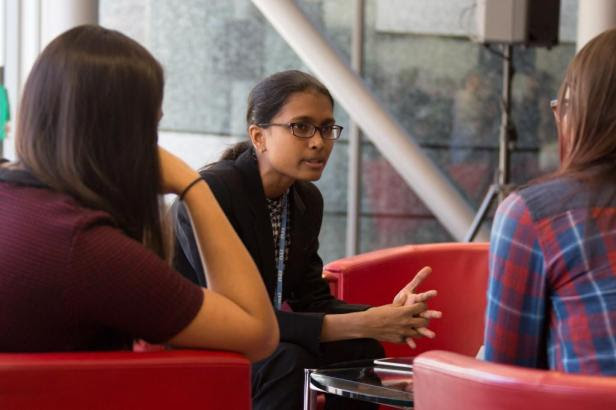Green Business
Rohini Swaminathan, who works as an Emergency Specialist, Risk Analysis and Monitoring, with UNICEF Headquarters in New York, has developed GIS/Satellite based analysis around complex emergencies and global problems using qualitative and quantitative indicators
Q: What influences made you choose such an offbeat career?
I grew up in a beautiful remote forest in the South Indian state of Tamil Nadu. I enjoyed spending time in the midst of nature, climbing trees, watching monkeys, and falling asleep under a starry sky. Eventually, we moved to a rustic, small town where I went to high school. Throughout my childhood, I remained a fan of all the science, but my biggest interests have always been around maps. Ever since I was little, I would spend hours looking at an Atlas and would go around sketching countries with a stick. I was greatly influenced by the 2004 Indian Ocean Tsunami. South India saw its fair share of natural hazards and complex emergencies. Unconsciously, I started looking for answers to many questions around me –Why were the Gods so angry to create a Tsunami? Why do cyclones keep happening and the fishermen keep ignoring the warning and risk their lives? What can satellites do? Why didn’t the Sri Lankan refugees stay in their own camps? Hence, wading against most advice I received, I decided to pursue a lesser known major called Geoinformatics in Anna University, India. Eventually I went on to attend Purdue University in the US where I got my Masters in Geomatics.
Q: Tell us about your career path
During both my bachelor’s and Master’s, I spent every summer doing an internship somewhere. The most influential of them was one in Germany with the DAAD Fellowship during my third year in college where I got an opportunity to work with LiDAR remote sensing at the Stuttgart University of applied sciences. Following my final year in college, I did another internship at the Indian Institute of science in Bangalore where I developed further interest in using satellite data for environmental monitoring, especially in using remote sensing for air quality monitoring. As I graduated, I took up another internship with the NASA DEVELOP program in the US which gave me incredible opportunities to grow personally and professionally. I was able to explore different application areas within geospatial science from mapping forest corridors in Rwanda so mountain Gorillas could move around, water resources management in Peru, environmental monitoring in the US to multi-hazard risk analysis in Mexico. I slowly grew in the team, first as a team member, then as a team lead and finally was promoted to be the Centre Lead. Despite my academic background, it is only at NASA DEVELOP I was able to truly realize the real-world applications of geomatics to study frequent flooding, develop different drought severity indices, identify renewable energy sites, monitor deforestation-reforestation efforts, environmental management and agricultural practices, study insect affected forests and monitor mine land reclamation. In 2017, I moved to the UN Development Programme in New York as a UN Volunteer. I was introduced to the challenges in satellite-based monitoring of developmental projects at a country level and their implementation as well as the importance of coordination. In 2018, I took up a new position as a GIS Analyst with the World Food Programme in Rome.
Q: What were the challenges you faced? How did you address them?
First challenge was overcoming self-doubt created by constant questioning of my life choices that are not following the norms. Second, sustaining interest. Today, my every day work involves developing analysis around complex emergencies using qualitative and quantitative indicators. Main skills needed for this job are good understanding of different hazards and vulnerabilities, technical skills in information management, GIS, and data visualization, communication skills, and decent dose of enthusiasm to develop new solutions. The thing I like the most about the job is to be part of a bigger picture addressing global problems. Combining geospatial skills and knowledge along with qualitative analysis presents a comprehensive picture on the need for disaster preparedness.
Q: How does your work benefit society?
Although it is not always possible to see how my little contribution makes a real difference, it is encouraging to belong to a community of humanitarians whose primary goal is to work towards a better world. Mapping the impact of disaster as fast and accurate as possible helps emergency coordinators on the ground to plan their response and target the most affected areas. I get to connect academic research to humanitarian applications, and this is only possible through continuously gaining optimum understanding of both worlds.
















Leave a comment